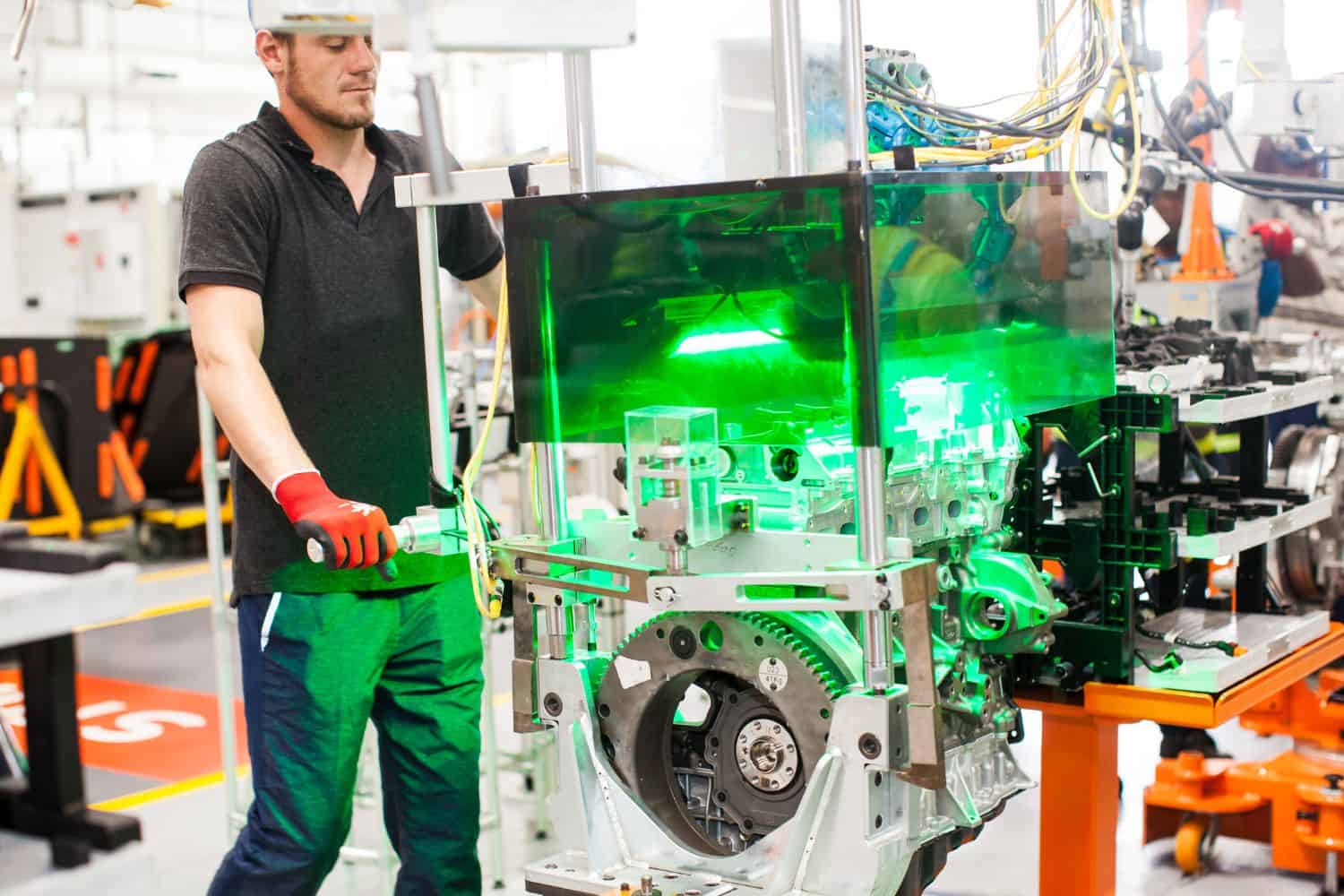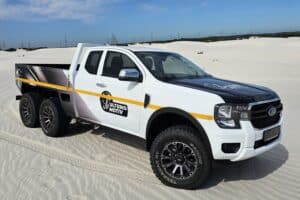This Ford engine plant operates like a hospital. Out on the line, every process is meticulously measured.

The surprise about Ford’s Struandale Engine Plant in Gqeberha in the Eastern Cape is that it is more like a medical facility than a clanking, hissing, steaming, noisy factory.
For a start, until recently and well beyond the end of the government’s Covid mandates, Ford still required employees to wear face masks to provide a safe and healthy work environment, and, due to the impact Covid sick leave can have on production at a finely-tuned, accurate and ‘just in time” production process.
The engine assembly line features positive air ventilation – as you would find in a hospital operating theatre, so contamination is minimised.
One germ can compromise, or even kill, a patient on the table… and specks of dust can compromise or kill an engine built to fine tolerances.

Plant manager Shawn Govender says these days, production part specifications are measured in microns (thousandths of a millimetre).
When he first joined Ford, getting on for 25 years, says Govender, the engines were a lot lower tech…and the tolerances much less precise.
Engineering specialist Henco Booysen takes up the theme: A human hair is 80 microns (0.08 mm) thick, and the quality checks are so accurate that a single hair has been known to result in an assembled component failing one of the many leak tests conducted along the assembly line.
The hospital analogies don’t end there… Quality control is constantly and obsessively being carried out on the production lines.
Even the smallest error will cause a batch to be redone or scrapped, and when components are checked and found to be ‘out of spec”, they are put into ‘quarantine” (as sick patients would be) so they can be examined and diagnosed.
Sometimes they can be cured, sometimes they can’t.
Out on the line, every process is meticulously measured – and recorded, often by smart tools, which are linked automatically to Ford’s global database.

It is stunning to realise that someone at Ford’s similar plant in Brazil can call up information from Struandale, whose people can, in turn, check on what the plant in Germany is doing.
This, says Govender, is a process which constantly happens as the various plants benchmark against each other, knowing the results will be scrutinised both locally and at the car maker’s global headquarters.
Ford invested R600 million in the engine plant, on top of the R15.8 billion it put into expanding the vehicle assembly operations at its Silverton plant in Pretoria.
In both cases, the investments were far from being handouts – Ford SA had to bid against others within the company’s global network to get the business.
And that, Govender notes with pride, shows how good South Africa can be in global competitiveness terms.
The Struandale facility machines components and assembles a range of diesel engines for Ford products around world.

The Silverton plant gets the single and biturbo 2.0-litre motors, which go into the Rang-er and Everest models, as well as the 2.2 and 3.2 engines.
More than two-thirds of the vehicles assembled at Silverton are destined for the export market – all powered by engines from Struandale.
At the same time machined components and assembled engines head out from Struandale across the world.
That’s one of the reasons Simoné Joseph, a quality engineer on the Block Line, has to be so dedicated to her job.
Her line operates two shifts while some of the others run three shifts around the clock. So she’s on call most evenings, ready to rush into the plant to sort out issues.
She knows that her fellow Ford engineers are watching her from around the world.
‘The other day my kids were quite surprised because I was home on the weekends,” she laughs.
Even as she speaks, she points to a senior auditor from Ford’s regional headquarters in Australia, who arrived at the factory at 6.30 am to watch how the early shift does things.
‘This is a matter of pride for us,” says the Struandale veteran, who started out as an operator on the RoCam engine line in 2004.
‘I don’t want anyone – a vehicle customer or another plant – coming back and saying they had a problem…”
Quality control – and what seems to be endless checking and double checking by the likes of humans like Simoné and numerous high-tech robots and camera systems – is the essence of the Struandale approach.
It is something of a surprise because Ford is not often spoken about like Toyota, which is lauded for its quality.
As you walk around the machining and assembly lines, you realise it would be near impossible for a ‘dud” engine to find its way into a Ranger or an Everest.
The accuracy and attention to detail are necessary for the longevity of modern com-plex turbodiesel engines – and, of course, keeping warranty claims to a minimum drives bottom line results.
Ultimately, as the Ranger and Everest car park” grows in SA and around the world, word-of-mouth will start to polish the brand image of Ford to the level where quality and reliability will not be a major question in a purchase decision.
And a world-class engine is a major part of the perception of quality.
NOW WATCH: March to Ford Motor Company ahead of Youth Day to demand jobs






